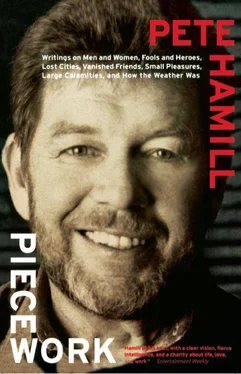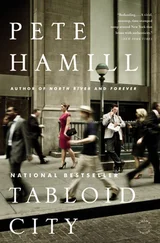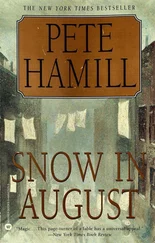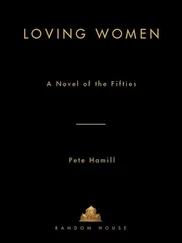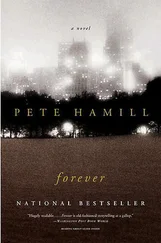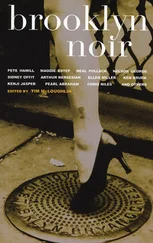Pete Hamill - Piecework
Здесь есть возможность читать онлайн «Pete Hamill - Piecework» весь текст электронной книги совершенно бесплатно (целиком полную версию без сокращений). В некоторых случаях можно слушать аудио, скачать через торрент в формате fb2 и присутствует краткое содержание. Год выпуска: 2009, ISBN: 2009, Издательство: Little, Brown and Company, Жанр: Современная проза, Публицистика, на английском языке. Описание произведения, (предисловие) а так же отзывы посетителей доступны на портале библиотеки ЛибКат.
- Название:Piecework
- Автор:
- Издательство:Little, Brown and Company
- Жанр:
- Год:2009
- ISBN:9780316082952
- Рейтинг книги:5 / 5. Голосов: 1
-
Избранное:Добавить в избранное
- Отзывы:
-
Ваша оценка:
- 100
- 1
- 2
- 3
- 4
- 5
Piecework: краткое содержание, описание и аннотация
Предлагаем к чтению аннотацию, описание, краткое содержание или предисловие (зависит от того, что написал сам автор книги «Piecework»). Если вы не нашли необходимую информацию о книге — напишите в комментариях, мы постараемся отыскать её.
offers sharp commentary on diverse subjects, such as American immigration policy toward Mexico, Mike Tyson, television, crack, Northern Ireland and Octavio Paz.
Piecework — читать онлайн бесплатно полную книгу (весь текст) целиком
Ниже представлен текст книги, разбитый по страницам. Система сохранения места последней прочитанной страницы, позволяет с удобством читать онлайн бесплатно книгу «Piecework», без необходимости каждый раз заново искать на чём Вы остановились. Поставьте закладку, и сможете в любой момент перейти на страницу, на которой закончили чтение.
Интервал:
Закладка:
Adams has spent most of his life in resistance to the British presence in Ireland. He lived as a child in Leeson Street in one of the worst Belfast slums, went to St. Finian’s primary school, St. Mary’s Christian Brothers School, and first saw action in 1964, when he was involved in the Divis Street riots. These were triggered by the display of a forbidden Irish tricolor in a window, an act that provoked a brutal attack by the RUC in which many civilians were injured. Soon he was deeply involved in republican politics, reading the literature of Irish revolution while working as a bartender at the Duke of York pub on Donegal Street. In those same years, he joined committees trying to alleviate housing and employment problems in Belfast and became a founding member of the Northern Ireland Civil Rights Association. At the time, there were almost no IRA members in the North; the organization had virtually ceased to exist. Then in August 1969, Belfast exploded, and Adams joined the self-defense teams in the Catholic ghettos. In March 1972, he was interned without charges, along with hundreds of other young Irishmen, and sent to the prison camp at Long Kesh. He soon found himself in the notorious Cage 11, from which many IRA leaders were to emerge. Adams does not, however, agree with the widely held theory that Long Kesh was the university of Irish republicanism.
“Maybe I’m wrong,” he said one recent morning. “But I think that aspect was very much exaggerated. They’ve got to explain this so they say, ‘Well, they were all stupid, they all got arrested, they all went to jail, and in jail they all got very clever, and then they got out and caused all this trouble.’ I don’t agree with that.”
But for Adams and his friends, much of the time in Cage 11 was well spent. “It was really a matter of putting in order whãt people already knew. That was my experience. Cage 11 was actually a wee bit different from all the other cages, because it was a wee bit crazy. It was sort of a M* A*S*H camp. The rest of the camp was militaristic, regimented, like a British Army thing, with officers of the day and so on.” Adams smiled. “Cage n didn’t have any of that.”
Today, Adams works most days in Connolly House, the headquarters of Sinn Fein in the Andersonstown section of Belfast. In a large room on the ground floor, local people wait to see Sinn Fein volunteers for help with problems. Sometimes the problems involve domestic disputes, erring husbands, disturbed children, other casualties of the war. Some visitors might have problems with government agencies or conditions in government-owned housing.
“We always did some of this work,” Adams says. “But now, with electoral legitimacy, we can call up on behalf of a constituent and do the same work with some clout.”
Connolly House is located in a small area of shops and two-story houses, and it was here that Martin Galvin of Queens came to speak last year in defiance of a British ban on his presence in the northern democracy. As soon as Galvin appeared at the side of Adams, the RUC charged, smashing into Irish and American members of the crowd. One RUC man fired a plastic bullet at a 20-year-old Irishman named John Downe and killed him. The American visitors, most of whom were members of Irish Northern Aid, which supports Sinn Fein and the IRA, were shocked by the viciousness of the assault. Adams was not.
“That’s the way they are,” Adams says. He likes to point out that the British have “a political code disguised as a moral code; they can use force and nobody else can.” Noting the current discussion of “widespread alienation” in the North, Adams says, “Thatcher’s way of dealing with alienation is to shoot the alienated.”
Adams clearly wants the support of Irish-Americans, but doesn’t believe Sinn Fein or the IRA should alter their goals to please potential supporters. He is, for example, frank about being a socialist, and doesn’t accept the conventional analysis that the Northern Ireland struggle is just a tribal conflict between Catholics and Protestants. He certainly doesn’t want a “Catholic Ireland” and has clashed on a number of occasions with the Catholic hierarchy. The Sinn Fein vision of a united Ireland is decidedly nonsectarian.
“Historically, the church was always in the position of being fairly divorced from the people and not being involved with them in any social issues,” Adams says. “There are all sorts of examples of absolute stupidity here. Ballymurphy, here in Belfast, has a fantastically high rate of unemployment and poverty, and it had visited upon it a multi-thousand-pound church that the people had to pay for, which didn’t even have dwellings for a priest. So now they have this big mausoleum in the middle of Ballymurphy, but the priest is still two miles up the road.”
As it did in 1916, the church has repeatedly come down hard on the IRA. “It’s a conservative church, there’s no doubt about it,” Adams says. But there have been some changes — in Irish terms, very big changes. The fact that so many priests could come out against the Reagan visit, so many nuns and sisters oppose the Central American policies — that’s a change, a big one. And there are a sprinkling of radical priests about the place. But you have to distinguish between the church and the hierarchy. I mean, I’m a member of the church, as is every other Catholic in Sinn Fein; the hierarchy is only part of the church, too.”
Religion is not, however, the critical problem. Adams says the first order of business is independence, and from that would flow an independent Irish foreign policy, built on “positive neutrality,” unaligned either with NATO or the Warsaw Pact: A socialist economy would include nationalization of natural resources, banks and major industries; limits on the ownership of large tracts of land; most of all, a planned economy.
“The present economy,” he says, “which is called a free-enterprise economy, is actually a planned economy, but it’s planned in favor of the small minority who control the wealth.”
He says charges that Sinn Fein and the IRA plan to create “another Cuba” in Ireland at the point of a gun, or institute some sort of totalitarian government on the Eastern European model, are absurd. The IRA gunmen are here for the moment, Adams says, “but once independence is secured, armed struggle is finito. Sinn Fein would then figure in an Irish democracy — which is denied us at present — for the things we want. But it would be up to the Irish people to say yea or nay. If the people accept it, fair enough. If they accept part of it, fair enough. If they reject it, fair enough.”
Adams doesn’t believe that such independence will come easily. The British, in his analysis, will not leave the North of Ireland quietly because “many of the reasons why Britain colonized in the first place still stand.”
One major reason, in Adams’ view, was national security. “She was always concerned that her opponents like France and Spain would form an alliance with the Irish and come in through the back door. That still comes up with NATO, still comes up with some of the right-wing Tories.” Adams believes there was also an ideological reason for the initial British conquest; Britain at the time was a feudal society, while Ireland was decentralized, somewhat radical, with communal ownership of lands and sharing of labor.
“That’s what they fear now,” Adams says. “A victory for Irish freedom, if it led to the radicalization of Ireland, would have an effect on Britain itself. You can see what the Tories are afraid of in the way they’re treating their miners. They would just have nightmares if people like me had something to say about the way this country is governed.”
In addition, there is British jingoism and racism. “We are the first and the last colony of Britain. And there is almost a racist attitude about Ireland. It probably would be simpler if we were black. We’re only 20 miles from their shores at some points. If we were in Cyprus, or Rhodesia, or Hong Kong, it would be much easier. And finally, although everybody doubts it, I believe there’s an economic factor, too. We are a market for their goods. Whatever industry is here is still majority-owned by the British. All the clothes I wear, the wallpaper on the walls, the tea I drink, everything comes from Britain.”
Читать дальшеИнтервал:
Закладка:
Похожие книги на «Piecework»
Представляем Вашему вниманию похожие книги на «Piecework» списком для выбора. Мы отобрали схожую по названию и смыслу литературу в надежде предоставить читателям больше вариантов отыскать новые, интересные, ещё непрочитанные произведения.
Обсуждение, отзывы о книге «Piecework» и просто собственные мнения читателей. Оставьте ваши комментарии, напишите, что Вы думаете о произведении, его смысле или главных героях. Укажите что конкретно понравилось, а что нет, и почему Вы так считаете.
